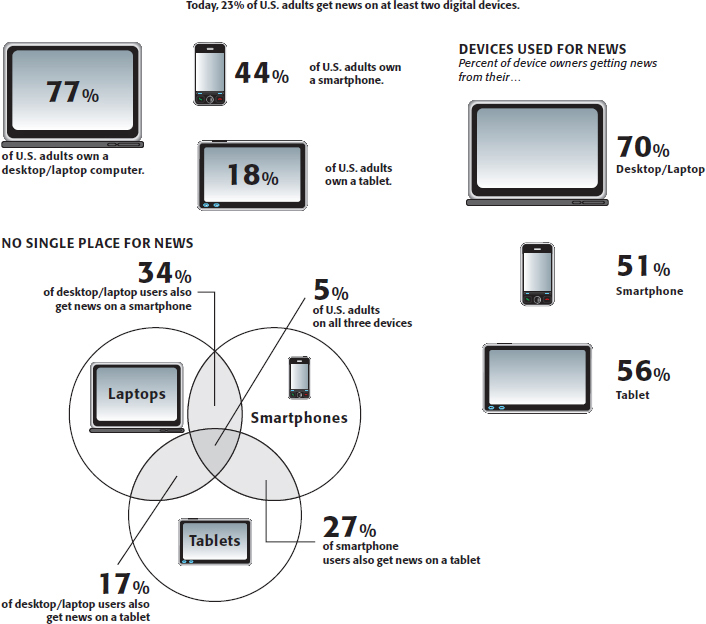Going Digital
Printed Page 85
One of the biggest challenges facing newspapers has been the digital revolution. Newspapers struck back by developing online editions of their papers, charging subscription fees for access to these versions or relying solely on online ads to stay in business. By 2010, more and more newspapers were moving the bulk of their operations online while dramatically decreasing their news staffs. For example, the Seattle Post-Intelligencer folded its print paper in 2009 and went online only. In this transformation, the reporting staff shrank from 165 to 20.
Though slow to evolve, online newspapers are now taking advantage of the flexibility the Internet offers by posting stories and reader letters online that they didn’t have room to print in their paper editions. They can also run longer stories with more in-depth coverage, often with hyperlinks to other information sources for readers who want to know more. And they can provide free video and audio links, as well as offer immediate updates to breaking news. Also, most stories appear online before they appear in print, so they can be posted at any time and updated several times a day.
VideoCentral  bedfordstmartins.com/ mediaessentials
bedfordstmartins.com/ mediaessentials

Newspapers and the Internet: Convergence
This video discusses the ways newspapers are adapting to online delivery of news.
Discussion: What different kinds of skills are needed to be effective in the new online world? What skills might remain the same?
Despite these advances, print newspapers still collect more advertising revenue than any other medium except television, although that amount has been declining since the late 1980s (see Figure 3.2 below). To boost online revenue, more than four hundred daily newspapers struck business deals with Yahoo! and Google—the Web sites most readers use to search for news—in 2008, to launch an ad venture promising to raise online papers’ revenue by 10 to 20 percent. Google also established contracts with the Associated Press wire service to carry news, though some newspapers argued that Google was making money on advertising by linking readers and users to newspaper Web sites that were then receiving little compensation from Google.
Some better-known papers, such as the Wall Street Journal and the New York Times, have experimented with charging online readers. The Wall Street Journal has placed content behind a subscriber-only paywall since 1997, while the Times has experimented with varying levels of access. The most recent model, implemented in 2011, allows readers to view up to twenty articles per month, while subscribers get unlimited access. This version has been deemed a success so far,12 showing some hope for a new online-inclusive path toward profitability—at least for papers with strong name recognition and loyal readership.
Other news companies are finding ways to cater to readers’ increasingly digital lifestyles, developing material for new digital platforms like the touchscreen tablet. In 2011, for example, Rupert Murdoch’s News Corp. launched the Daily—the first “newspaper” designed especially for an iPad. The Daily offers readers who download the app free content for two weeks, and then asks them to subscribe for 99 cents a week or $39.99 for a year. News Corp. invested $30 million in the project, started with a staff of a hundred, and featured six sections, including news, gossip, opinion, arts and life, apps and games, and sports.
